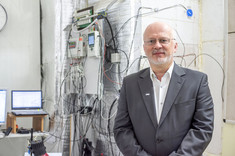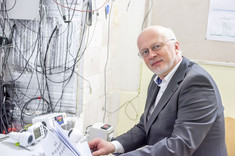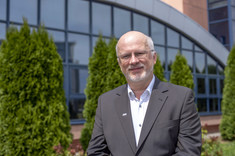Interactive solar active thermal insulation wall with heating function (ISAS)

The project entitled "Interactive solar active thermal insulating wall with heating function (ISAS)" by Jerzy Szyszka, PhD, Eng., from the Department of Building Engineering at the Faculty of Civil and Environmental Engineering and Architecture was awarded a gold medal and the "Award of The First Institute Researchers and Inventors (I.R.I.)" at the INTARG® 2022 International Invention Fair.
The project "Interactive Solar Active Thermal Insulation Wall with Heating Function (ISAS)" received funding under the second call for grant applications of the Podkarpackie Innovation Center. ISAS is a type of external wall that can be widely used in residential, public or industrial construction. Unlike walls made with traditional technology, which minimizes heat exchange between the building and the external environment, the interactive solar-active wall has selective thermal resistance. Thus, reacting interactively to external climatic conditions, in winter it protects against heat loss analogously to traditional walls, and in situations of sufficient solar radiation it allows heat recovery through photothermal conversion. Depending on the thermal mass used, the wall can also give back the absorbed heat after sunset until the next day, reheating the adjacent room. By using selective thermal resistance in the summer, ISAS has the ability to lower its own temperature at night.
Tests of the wall's energy efficiency were conducted at the Department of Building Engineering in a test chamber under field conditions and in a specially designed simulation bench. Conducting simulations of the thermal functioning of the wall using the theory of planning the experiment made it possible to develop a mathematical model of the dependence of energy efficiency on varying environmental conditions. This is a tool for predicting the thermal balance of ISAS. The conducted research confirmed the theoretical assumptions of the solution, for which Jerzy Szyszka, PhD, Eng., received two patents. The author plans to develop the project in the direction of the ability of ISAS for summer cooling by intensifying the phenomenon of radiative heat transfer.










